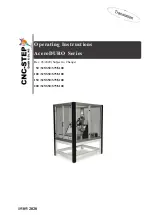
1-25
Cisco BPX 8600 Series Installation and Configuration
Release 9.3.30, Part Number 78-12907-01 Rev. E0, May 2005
Chapter 1 The BPX Switch: Functional Overview
Traffic and Congestion Management
The ABR sources periodically interleave RM cells into the data they are transmitting. These RM cells
are called forward RM cells because they travel in the same direction as the data. At the destination these
cells are turned around and sent back to the source as backward RM cells.
The RM cells contain fields to increase or decrease the rate (the CI and NI fields) or set it at a particular
value (the explicit rate ER field). The intervening switches may adjust these fields according to network
conditions. When the source receives an RM cell, it must adjust its rate in response to the setting of these
fields.
When spare capacity exists with the network, ABR with VS/VD permits the extra bandwidth to be
allocated to active virtual circuits.
Optimized Bandwidth Management (ForeSight) Congestion Control
This section describes Optimized Bandwidth Management (ForeSight). The BPX/IGX switch networks
provide a choice of two dynamic rate-based congestion control methods, ABR with VS/VD and Cisco
Optimized Bandwidth Management (ForeSight).
Optimized Bandwidth Management (ForeSight) can be used for congestion control across BPX/IGX
switches for connections that have one or both endpoints terminating on cards other than BXM. The
ForeSight feature is a dynamic closed-loop, rate-based congestion management feature that yields
bandwidth savings compared to non-ForeSight equipped trunks when transmitting bursty data across
cell-based networks.
When there is unused network bandwidth available, ForeSight permits users to burst above their
committed information rate for extended periods of time. This enables users to maximize the use of
network bandwidth while offering superior congestion avoidance by actively monitoring the state of
shared trunks carrying Frame Relay traffic within the network.
ForeSight monitors each path in the forward direction to detect any point where congestion may occur
and returns the information back to the entry to the network. When spare capacity exists with the
network, ForeSight permits the extra bandwidth to be allocated to active virtual circuits. Each PVC is
treated fairly by allocating the extra bandwidth based on each PVC's committed bandwidth parameter.
If the network reaches full utilization, ForeSight detects this and quickly acts to reduce the extra
bandwidth allocated to the active PVCs. ForeSight reacts quickly to network loading to prevent dropped
packets. Periodically, each node automatically measures the delay experienced along a Frame Relay
PVC. This delay factor is used in calculating the ForeSight algorithm.
With basic Frame Relay service, only a single rate parameter can be specified for each PVC. With
ForeSight, the virtual circuit rate can be specified based on a minimum, maximum, and initial
transmission rate for more flexibility in defining the Frame Relay circuits.
ForeSight provides effective congestion management for traversing broadband ATM for the PVC.
ForeSight operates at the cell-relay level that lies below the Frame Relay services provided by the IGX
switch. With the queue sizes utilized in the BPX switch, the bandwidth savings is approximately the
same as experienced with lower speed trunks. When the cost of these lines is considered, the savings
offered by ForeSight can be significant.
Summary of Contents for BPX 8650
Page 49: ...P A R T 1 The BPX Switch ...
Page 50: ......
Page 159: ...P A R T 2 Installation ...
Page 160: ......
Page 273: ...P A R T 3 Initial Configuration and Network Management ...
Page 274: ......
Page 311: ...P A R T 4 Configuring Connections ...
Page 312: ......
Page 487: ...P A R T 5 Troubleshooting and Maintenance ...
Page 488: ......
Page 533: ...P A R T 6 BPX Specifications ...
Page 534: ......
Page 555: ...P A R T 7 Appendices ...
Page 556: ......
















































